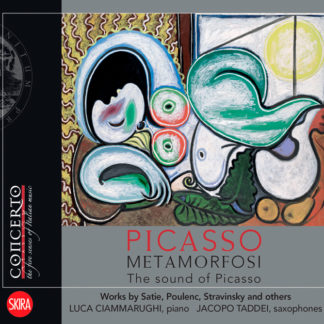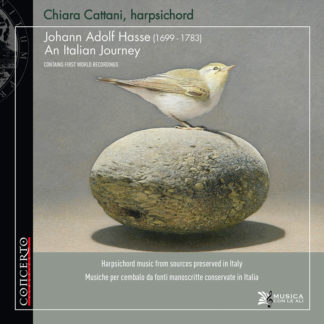1. Anonimo Spagnolo
FOLIAS (1708)
2. Anonimo Inglese
THE SPANISH FOLLYE (1685)
3. Anonimo spagnolo
TONOS DE PALACIO, FOLIAS (1707)
4. Ascanio Majone
PARTITE SOPRA FIDELE (1603)
5. Anonimo spagnolo
LAS FOLIAS (1709)
6. Gio. Maria Trabaci
CONSONANZE STRAVAGANTI
7. Gio. Maria Trabaci
PARTITE SOPRA FIDELE (1603)
8. Bernardo Pasquini
PARTITE SOPRA LA ARIA DELLA FOLIA DE ESPAGNA
9. Bernardo Pasquini
PARTITE DIVERSI DI FOLLIA
10. Anonimo spagnolo
FOLIAS GRAVES (1721)
11. Girolamo Frescobaldi
PARTITE SOPRA FOLLIA
12. Girolamo Frescobaldi
100 PARTITE SOPRA PASSACAGLI
13. Anonimo spagnolo
OTRAS FOLIAS (1709)
14. Bernardo Storace
FOLLIA
15. Bernardo Storace
CIACCONA
16. Alessandro Scarlatti
TOCCATA PER CEMBALO D’OTTAVA STESA (1723)
VARIAZIONI SULLA FOLLIA DI SPAGNA
The term “follia” in the history of music, defines a melodic pattern from a very ancient Carnival dance, one of those impetuous and dishonest dances in which everyone seems to lose his or her mind, using gestures in an absolutely uncomplimentary way; possibly of Portuguese origin-so the magister of the University of Salamanca Francisco de Salinas informs us in the 16th century-it had immediate diffusion in the Hispanic area to immediately impose itself throughout Europe: It appears in court music, in solo or paired dances, in the repertoire of the great seventeenth-century virtuosi in England and France-just think of Marin Marais’s fascinating variations for viola da gamba-to land in the eighteenth century among the Arcadians, contribute to the definition of the violin style with Arcangelo Corelli, continue to spread widely in Germany, among nineteenth-century pianists, and … one could continue until today.
Having forgotten its Lusitanian origin, the so-called “Follia di Spagna” stands out as particularly captivating in its melody and the naive simplicity of its harmonic path, as is well heard in the anonymous “Folias” taken from early 18th-century collections in the Biblioteca Nacional in Madrid; organists and harpsichordists from different backgrounds take inspiration from the Folia, but the CD dwells on Italian production, particularly from the Roman and Neapolitan areas.





